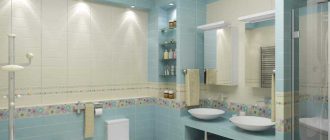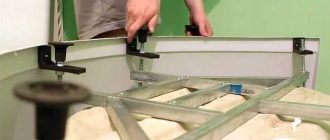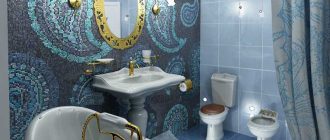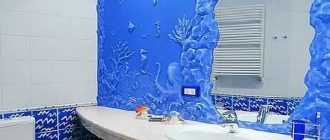Not all bathrooms are large enough – old houses were not designed to have any appliances, simply because they were not available then. Those houses are still in use and the owners have to solve difficult problems – how and where to install household appliances. Most often there are problems with automatic washing machines. It is necessary to have water and sewerage, and these conditions are only in the bathroom and kitchen. Bathroom for the installation of a washing machine is considered in the first place. Even if it has a very small size, there is one good option for placement – a sink over the washing machine.
Obsah článku
What are the differences
From the usual sink over the washing machine is characterized by a shallower bowl depth, larger dimensions and a special-shaped drain. The bowl is made as flat as possible. On average, its height, together with the protrusion of the drain, is about 20 cm.

At the same time, the dimensions of the sink are increased – it must cover the machine standing under it, excluding the ingress of moisture. The width and depth of washing machines are usually 50-60 cm, smaller models are very rare. Sinks, which are installed above washing machines have the same dimensions. Because of this shape – wide and flat – this type is also called “lily pad”.

The drain also differs. It can be located in the middle, as in conventional washbasins, or it can be on the side, usually on the right. A small spigot for a few centimeters goes down, then sharply goes back or to the side. Special siphons are connected to such a drain. Sometimes they come in a set, sometimes you have to buy separately.
When choosing a siphon on the sink above the washing machine, it is desirable to find such a model, to which you can connect the drain from the washing machine. In this case, connecting it to the sewer system will be quite simple. You will only need to insert the drain hose into the appropriate outlet. The same applies to the mixer on the sink. Look for a model with an additional outlet for household appliances.
Which washing machines can be installed under the sink
Small-sized washing machines can be installed under the washbasin. They should be low and shallow. For people of average height, washbasins in the bathroom are installed at a height of 80 cm. Given that the sink is about 20 cm high, the height of the washing machine should be about 60 cm. For tall people, the normal installation height of the sink is up to 100 cm. In this case, the washing machine can be about 80 cm high.
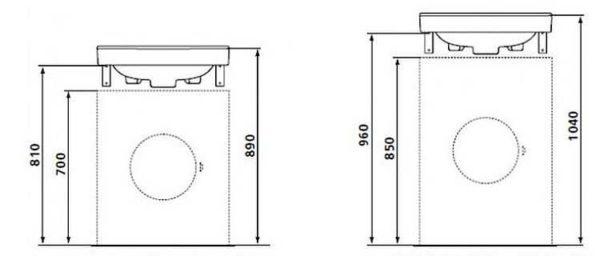
When installing, remember to leave a gap between the body and the trap. When spinning the machine can vibrate, so that the vibration is not transmitted and this gap is required.
The depth of the machine is also chosen based on the size of the sink (or vice versa, depending on what is already available). On average, with the size of the sink above the sink 50 cm, the depth of the washing machine is 32-36 cm, with a sink 60 cm – up to 51 cm.
When installing, note that the siphon should not touch the body. The reason is the same – vibration during spinning.
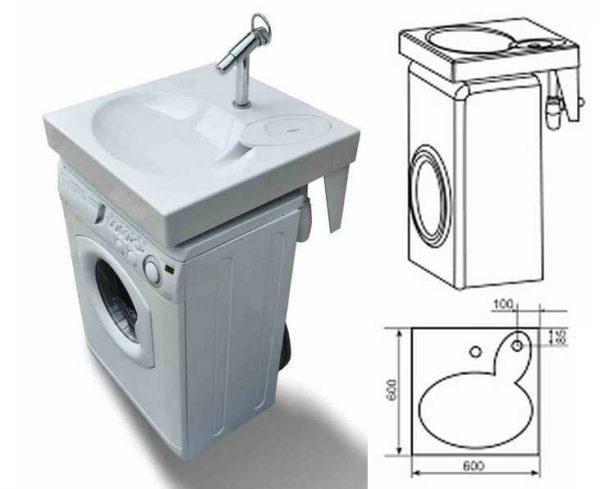
Between the body of the machine and the wall remains a solid gap, in which the sewer pipe is successfully laid. If its diameter is larger, it can be partially hidden in the wall.
Sink over the washing machine: types
The jug sink can have a drain hole in the center or on the side. Models with a drain in the center have a greater depth – the outlet requires space. On average, the depth of such a sink-jug is 18-20 cm. When installed, there is a significant gap between the bottom and the top cover of the machine. On the one hand, you can store small things there, on the other – it is not very convenient to clean. But such models are the majority, because with such a structure there are fewer requirements for balancing (stability) of the washing machine – the gap allows you not to worry about vibration during operation.
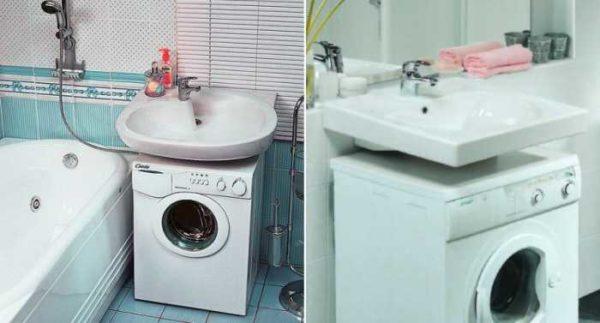
From the point of view of electrical safety this option is not the best – if the siphon leaks, the water will pour onto the machine. There is a high probability that it will get on the live parts, which will cause the machine to break down. So when installing the washing machine, pay special attention to sealing. Perhaps, in addition to gaskets and seals, it makes sense to use a sealant. Only take not acrylic, but silicone, and better – for aquariums. It will definitely serve for a long time.
Drainage from the side and back
Drainage from the side is less common. In this case, the spigot is displaced backward and sideways and is located behind the body of the machine. With this structure, the sink can be practically stacked on top of the top lid. The bottom is almost flat, the sides are obtained flush with it or can even be slightly higher. The depth of such models in the front part is smaller – about 10-15 cm, and the rear, where the drainage spigot is located, also has a height of about 20 cm.

There are few models with this structure. In our stores (online stores) found only a few variants – PAA CLARO Latvian-made. A ceramic soap dish is installed above the drain. In fact, it just covers the drain hole and can be removed if desired. In warehouses is usually available in white, but under the order can be made in color variant – colors and shades more than 20.
There is its clone – Belarusian model Belux Idea.The difference in price, it must be said is not too big – 234$ for the Baltic version and 211$ for Belarusian.
There are some more variants in Latvian stores: STATIO Deja, POLYCERS izlietne Compactino. These are also products of local firms. A similar model is available in Russian production – Kuvshinka Kvatro.
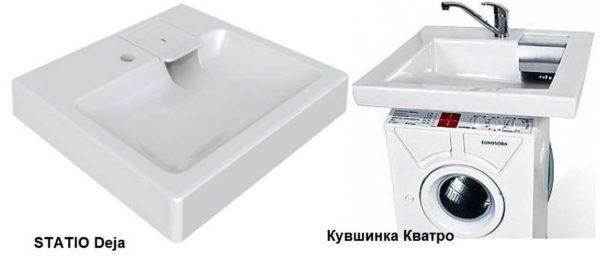
What is good about this type of sink? The drain is displaced to the back, which means that even if there is a leak, the water will not get on the machine, so it will not bring harm to it.
Drain at the back
There is a slightly more familiar variety – the drain is displaced to the back, but without shifting to the side. All the advantages of such a design are the same, the category is slightly more numerous – they do not look so unfamiliar. There is a non-standard variant in this group – the model BELUX EVRIKA (Belarusian production). In Eureka (on the photo on the right) the faucet is shifted to the side, because the part covering the drain is removable – for the possibility of cleaning.
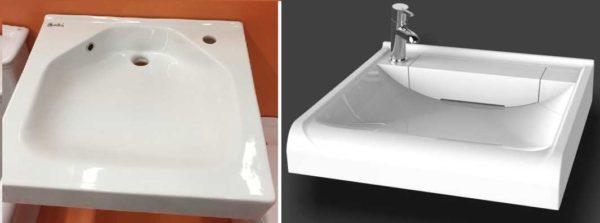
There are many more of these sink models. They are about the same number as those with drains in the center, so there is a choice. The price range is quite decent – from the Russian Santek Pilot 50 (size 60*50 cm) for $36 to the Finnish Ido Aniara 1116601101 for $230 (size 60*59 cm). If you search, you can probably find both cheaper and more expensive.
With a countertop
If the situation with the space in the bathroom or toilet is not so critical, you can install a sink above the washing machine with a countertop. The machine is installed under the worktop. This option from the point of view of electrical safety is the most preferable. There is one disadvantage – sinks with a countertop are expensive.
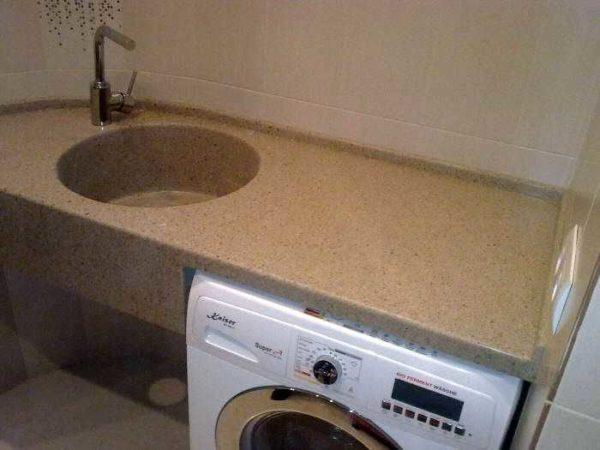
To remove the dissonance between the occupied part of the body and the empty space under the sink, doors are attached to the second part, and inside you can make shelves or drawers for storing chemicals or other things.

There are other models – angular, rounded, etc. They should be selected for each specific interior with its own dimensions.
Z jakých materiálů jsou vyrobeny
Sinks for installation above the washing machine, as well as any sanitary devices, are made of porcelain and faience. Faience is cheaper, but has a more porous structure and is itself hygroscopic. To circumvent these shortcomings, the surface is covered with glaze. If it is applied qualitatively, the product has a good appearance, does not get wet. But after some time, the glaze can crack. The cracks are microscopic, but they are clogged with dirt, the surface acquires a grayish color, and nothing can be done about it. That’s why faience has to be replaced often.
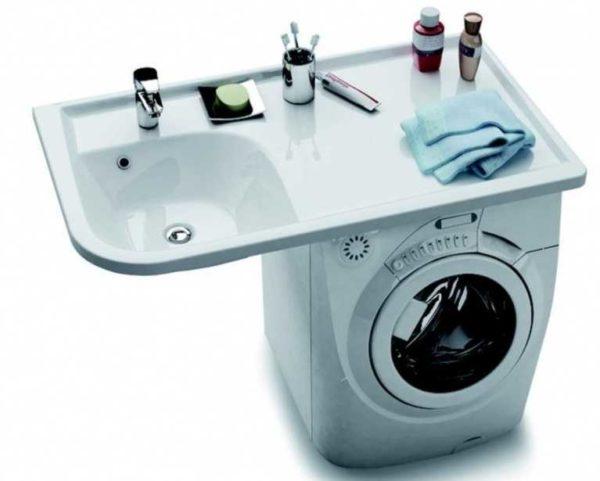
Porcelain sinks are more expensive and weigh more, but they are more durable. The surface is smoother, dirt does not settle on it, it is easier to keep clean.
Often there are sinks made of artificial stone. This is a mixture of polymer with stone dust and crumbs. High plasticity of the mass allows you to get any shape, achieve any color and shade.

There are firms that are ready to make sinks strictly according to your dimensions. Naturally, individual manufacturing is more expensive, but the available area is used rationally.
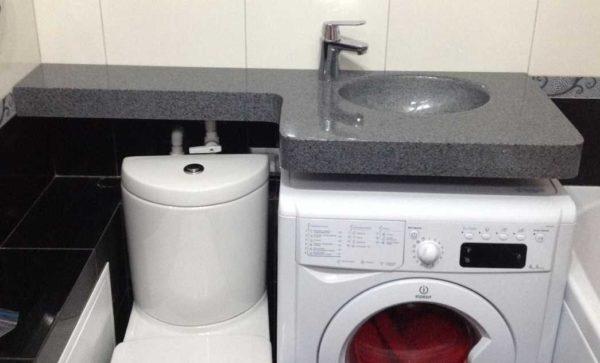
Installation of a washbasin over the washing machine
The very installation of the washbasin over the washing machine is standard. All the difference is to mark the height of the washing machine, then choose a place to mount the brackets for the installation of the sink so that the bottom of the sink is in the right place. How much to raise the brackets is written in the product passport – it is a variable value, which each model has its own and depends on the type of bracket. So you will have to calculate it yourself.
After installing the brackets, you can make a fitting: hang the washbasin and make sure that it is at the required height. Then you can install the mixer and trap. Siphon, as you remember, should be special, the output of which immediately turns back. A corrugated hose is connected to the plastic spigot, which is fixed to the wall (you can plastic clamps).
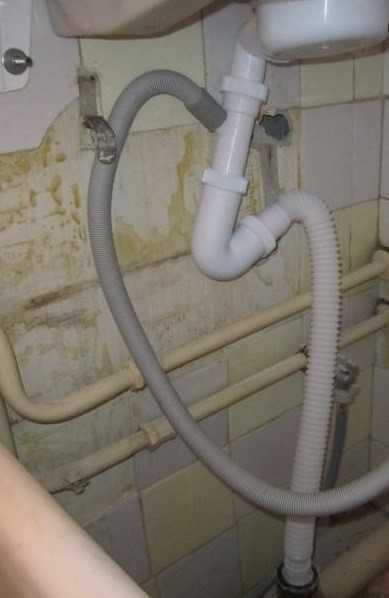
Next, we install the sink on the brackets. Some of them provide for fixation with bolts. First and to the end do not screw leave about 5 mm. Then on the back wall of the washbasin on the upper edge we apply a layer of silicone sealant. It will prevent water from getting into the gap between the sink and the wall. After that, you can tighten the bolts.
Next – the connection to the water supply and sewerage, after which it is necessary to immediately check the performance of the washbasin. If everything is normal, you can connect the machine and push it into place.



